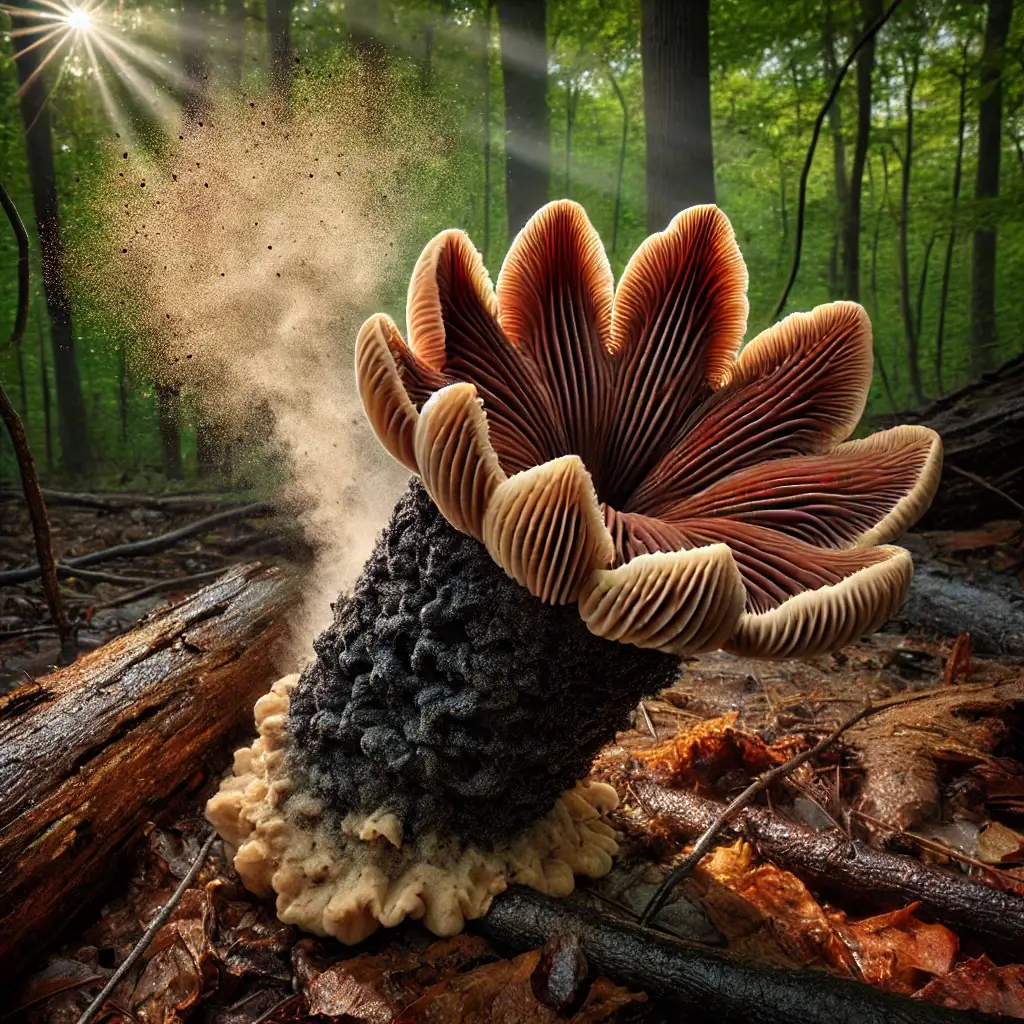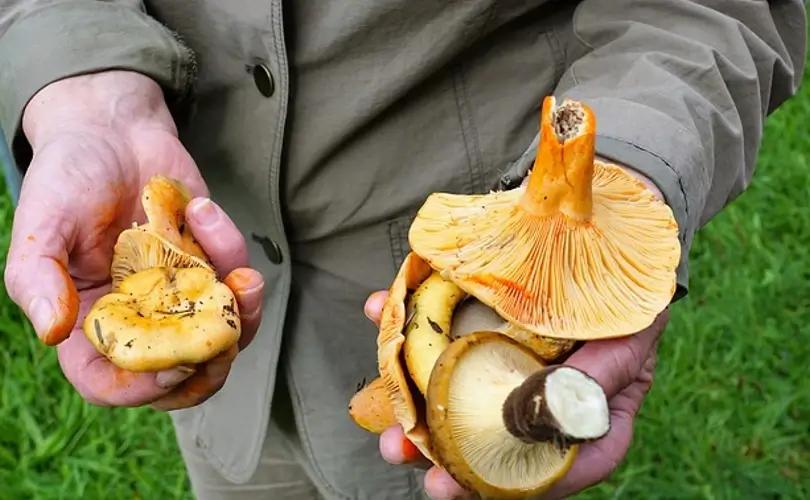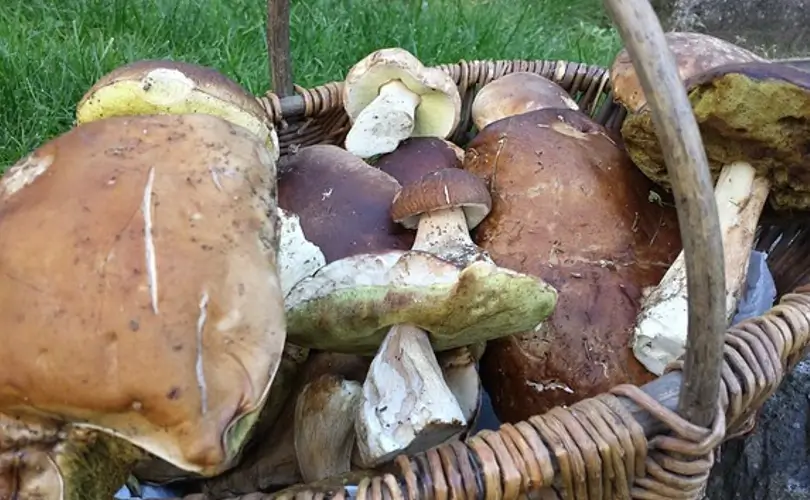The Mysterious Texas Star: Nature’s Rare Fungal Wonder
The rare hissing mushroom, famously known as the Texas Star Mushroom (Chorioactis geaster), is a remarkable fungal species that captivates both mycologists and nature enthusiasts alike. Found primarily in North and Central Texas, with sporadic appearances in Oklahoma and Japan, this elusive fungus is a spectacle of transformation and survival. Its initial cigar-like appearance—dark and fuzzy—is deceiving, as it later unfurls into a tan, star-shaped structure, a metamorphosis that has earned it the nickname “Devil’s Cigar.”
Dramatic Spore Dispersal: Nature’s Theatrical Performance
What truly sets this mushroom apart is its dramatic mode of spore dispersal. Following a period of rain, the Texas Star bursts open with an audible hissing sound, expelling a visible cloud of spores into the air. This rare phenomenon results from a buildup of internal pressure, an evolutionary adaptation that ensures effective spore distribution. As one of nature’s most theatrical fungi, the Texas Star highlights the intricate mechanisms fungi use to thrive in their habitats. Despite its rare sightings, it has become a symbol of biodiversity and ecological interdependence.
Ecological Requirements: The Perfect Conditions for Rarity
This mushroom’s rarity is attributed to its specific habitat requirements. Thriving on decaying cedar elm stumps, it depends on particular soil types, climatic conditions, and host trees for survival. These constraints make its presence a valuable indicator of environmental health, emphasizing the importance of conserving its fragile ecosystems. For researchers and mushroom enthusiasts, the Texas Star represents both an ecological marvel and a conservation challenge.
Scientific Breakthroughs: Unraveling the Hissing Mystery
The Texas Star Mushroom has been the focus of intriguing research that sheds light on its unique characteristics. A groundbreaking study in 2023, published in Mycological Research, investigated the hissing mechanism, revealing its dual role in spore dispersal and environmental responsiveness. The researchers observed that changes in moisture levels and air pressure trigger the explosive release of spores, ensuring propagation even under challenging conditions. Such findings underline the complexity of fungal survival strategies.
Global Connections: Bridging Texas and Japan Through Fungi
In an exciting development, researchers from Kyoto University collaborated with the University of Texas in 2024 to study the genetic diversity of Chorioactis geaster. By comparing populations in Texas and Japan, they uncovered striking similarities despite their geographical separation. This research supports the theory that these populations share a common ancestor, with divergence likely occurring millions of years ago due to tectonic shifts. These findings not only illuminate fungal evolutionary pathways but also connect disparate ecosystems across the globe.
Community Science: Engaging Citizens in Fungal Discovery
Citizen science initiatives have also played a pivotal role in advancing knowledge about the Texas Star. In 2024, a mobile application was launched by the University of Texas, encouraging residents to document sightings of the mushroom. This initiative has significantly expanded the database of its occurrences, allowing scientists to map its distribution with greater accuracy. Such collaborative efforts highlight the importance of public engagement in conservation science.
Ecological Significance: The Mushroom’s Role in Forest Health
Additionally, the role of Chorioactis geaster in nutrient cycling and forest ecology has garnered attention. Recent studies suggest that the mushroom’s interaction with decaying wood enhances soil fertility and supports surrounding vegetation. By breaking down organic material, it contributes to the intricate web of life that sustains forest ecosystems. These ecological functions make the Texas Star an integral part of its habitat, further underscoring the need for its conservation.
Beyond Curiosity: A Testament to Nature’s Adaptations
The Texas Star Mushroom is more than just a fungal curiosity—it is a living testament to the wonder of nature’s adaptations. Its dramatic lifecycle and ecological importance make it a key player in its environment, reminding us of the delicate balance required to sustain biodiversity. As researchers continue to explore its mysteries, the Texas Star serves as a beacon for conservation efforts and ecological education.
Conservation Call: Protecting a Natural Treasure
For those fortunate enough to encounter this rare gem, the advice remains clear: observe and protect. By preserving its habitat and understanding its role within the ecosystem, we not only safeguard a unique species but also honor the natural processes that enrich our planet. The rare hissing mushroom is a vivid reminder of the interconnectedness of life and the importance of maintaining the delicate systems that sustain it.
Research Sources: The Science Behind the Star
“The Mechanisms of Spore Release in Chorioactis geaster,” Mycological Research, 2023.
“Genetic Analysis of Disjunct Populations of Chorioactis,” Kyoto University, 2024.
University of Texas Citizen Science Initiative, 2024.
“Fungal Roles in Nutrient Cycling,” Journal of Forest Ecology, 2022.





